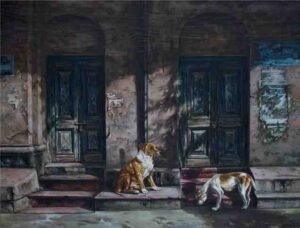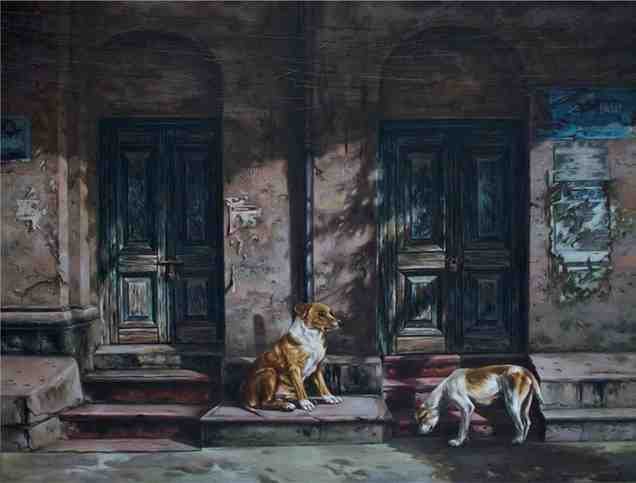Nature has long been a source of inspiration for artists, offering endless beauty and tranquility. For aspiring artists, capturing this beauty through a simple landscape watercolor painting is a wonderful way to connect with the natural world and express its serenity. Watercolor, with its gentle washes and translucent layers, is the perfect medium to depict the delicate nuances of nature. This article will guide you through the process of creating a landscape watercolor painting, offering inspiration and practical tips to get started.
Why Choose Watercolor for Landscapes?
Watercolor is a versatile and expressive medium, particularly suited to capturing the essence of natural scenes. Its fluidity allows for soft transitions and blends, mimicking the subtle variations in light and color found in landscapes.
- Transparency: Watercolor paints allow light to pass through, creating a luminous effect that works beautifully for skies, water, and foliage.
- Spontaneity: The unpredictable nature of watercolor can lead to happy accidents, adding character and uniqueness to your artwork.
- Accessibility: Unlike oil or acrylic painting, watercolor requires minimal supplies and can be easily set up anywhere—perfect for painting outdoors or at home.
Gathering Inspiration from Nature
Before starting your simple landscape watercolor painting, spend some time observing nature. Whether you’re in a park, at the beach, or in your backyard, pay attention to the colors, shapes, and light. Take photos or make quick sketches to capture the essence of the scene.
Questions to Ask Yourself:
- What time of day is it? Morning light creates soft, warm tones, while evening light brings cooler, deeper hues.
- What are the dominant colors? Notice the subtle variations in greens, blues, and earth tones.
- How does the light interact with the landscape? Look for interesting contrasts and shadows.
Connecting with nature this way not only enhances your observation skills but also deepens your appreciation for the beauty you’re trying to capture.
Essential Supplies
To create a simple landscape watercolor painting, you don’t need an elaborate setup. Here’s what you’ll need:
- Watercolor Paper: Use high-quality paper (140 lb or 300 gsm) to prevent buckling and ensure smooth washes.
- Watercolor Paints: A basic set of colors is enough to start. Focus on blues, greens, browns, and a few warm tones.
- Brushes: A few brushes of different sizes (round, flat, and fine-tip) will give you the versatility needed for various elements in the landscape.
- Palette: For mixing colors.
- Water and Paper Towels: Essential for cleaning brushes and controlling water levels.
- Pencil: For sketching the initial composition.
Step-by-Step Guide to Creating Your Painting
Let’s break down the process of creating a simple landscape watercolor painting into manageable steps:

Step 1: Sketch Your Composition
Start by lightly sketching the basic outline of your landscape on the watercolor paper. Focus on key elements such as the horizon line, mountains, trees, or a body of water. Keep the lines light, as they will be covered by paint.
Tip: Use the rule of thirds to create a balanced composition. Place the horizon line or focal point along these imaginary lines for a pleasing layout.
Step 2: Wet the Paper (Optional)
You can use the wet-on-wet technique for soft, blended backgrounds like skies or distant mountains. Lightly wet the area you want to paint with clean water using a large brush. This will allow the colors to flow and blend naturally.
Step 3: Start with the Background
Begin by painting the sky or distant elements. Use light washes of blue for the sky, adding hints of yellow or pink for sunrise or sunset effects. Allow the colors to blend gently.
Tip: Leave some white space for clouds or highlights.
Step 4: Layer the Midground
Once the background is dry, move on to the midground. This might include hills, trees, or fields. Use slightly darker tones than the background to create depth. Apply paint in layers, letting each layer dry before adding the next.
Techniques to Try:
- Wet-on-Dry: For more defined shapes like trees or mountains.
- Dry Brush: For texture, such as grass or distant foliage.
Step 5: Add Foreground Details
The foreground should be the darkest and most detailed part of the painting, drawing the viewer’s eye. Add elements like rocks, detailed trees, or flowers. Use a smaller brush for fine details.
Tip: Use contrasting colors or stronger shadows to make the foreground stand out.
Step 6: Final Touches and Highlights
Once the painting is dry, assess if it needs any final touches. Add small details like birds in the sky or ripples in the water. Use a clean, damp brush to lift out color and create highlights where needed.
Tips for Success
- Be Patient: Watercolor requires drying time between layers. Rushing can lead to muddy colors.
- Practice Light to Dark: Start with the lightest colors and gradually add darker tones.
- Experiment: Don’t be afraid to play with colors and techniques. Each painting is a learning experience.
Embrace the Beauty of Nature and Watercolor
Creating a simple landscape watercolor painting is not just about replicating what you see; it’s about capturing the feeling and essence of a moment in nature. With practice, you’ll develop your unique style and discover the joy of expressing yourself through this beautiful medium.
Whether you’re painting a serene lake, a forest bathed in golden light, or a field of wildflowers, each landscape becomes a personal reflection of your connection to nature. So, gather your supplies, head outside, and let the beauty of the natural world inspire your next watercolor masterpiece.


